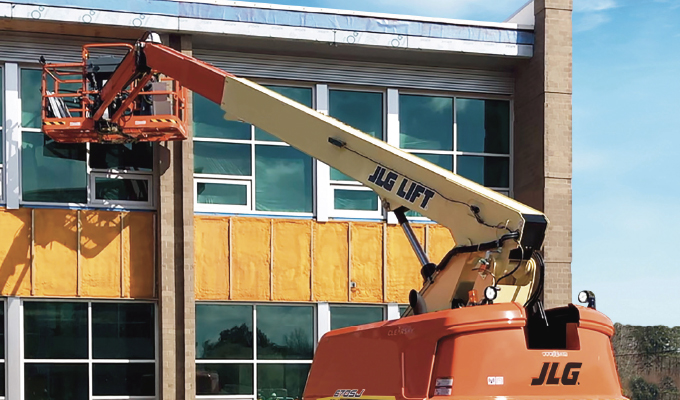One of the biggest challenges of implementing the updated ANSI A92.20 suite of standards in the U.S. (CSA B354 in Canada) has been effectively educating MEWP (mobile elevating work platform) owners and users about the changes outlined in the new version.
For example, things that may have happened in the past without apparent consequence, such as overloading the platform even minimally, are no longer allowed to occur on MEWPs that meet the current standards. In this scenario, operators need to be aware of how the load sensing features on compliant MEWPs work to prevent operation from continuing when an overload occurs.
And, at this point, everyone should now be trained to the new requirements in the updated standards. Written Safe Use programs should be in place and used daily. Familiarization should be taking place on any A92.20-designed machine to cover the new controls and operating characteristics, like load sensing. And equipment owners and fleet managers should have programs in place to regularly evaluate operators.
Yet, we find that so many are still unaware of these requirements.
Because compliance with the standards is critical to the safe use of these machines, here are three things everyone should know about the updated ANSI standards.
1. Complaint MEWPs may look the same as pre-A92.20 models–but they will operate very differently.
Under the updated standards, machines have been required to change. Many new features have been incorporated into a MEWPs’ design that will influence the machine’s operation and/or functionality.
Here is a quick synopsis of some of these features and how they can impact machine use:
LOAD SENSING
Change: Machines are required to actively monitor load and interrupt normal operations/sound an alarm if overloaded.
Takeaway: You need to pay close attention to machine capacity. Jobs can no longer be completed with an improperly loaded machine, which means that you need to take the weight of accessories and tools into account when calculating a MEWP’s load.
TILT SENSING REQUIREMENTS
Change: Machines that could previously only operate on level surfaces can now be used on slopes but are required to have a tilt sensor alarm and cutout. The system will disable boom and drive functions if the incline surpasses the slope limit.
Takeaway: You need to assess the terrain your machine will need to travel over. Depending on the job site, you may need to reposition your equipment or grade the work site to complete the job because MEWPs will no longer operate when on a slope.
WIND FORCE REQUIREMENTS
Change: To be rated for outdoor use, machines may require reduced platform capacities and/or increased weight for greater stability.
Takeaway: You need to check the MEWP you plan to use to see if it’s rated for indoor/outdoor use or indoor use only. This should be clearly marked on complaint machines.
So, don’t worry, these new MEWPs are not broken—they just operate differently than previous models. Being aware of these changes and how they will impact machine use will save a lot of frustration and reduce downtime.
2. Compliance with the requirements outlined in the Safe Use program must be documented in writing and kept on file.
The updated ANSI standards specify the proper application, inspection, training, maintenance, repair, and safe operation of MEWPS. And, one of the main requirements is to develop a written safe use program to guide MEWP use as it relates to jobsite safety.
It is important to note that “written” is the keyword here. Many jobsites already include the safe use of MEWPs in their tailgate or toolbox talks, addressing topics like rescue planning and workplace inspections, but there’s rarely documentation on file to prove it. In the new version of these standards, all of these discussions must now be tracked to keep records of the details and action items covered as part of the company’s documented safety programs.
Machine inspection and service records are also important to ensure a machine is compliant and safe to use.
3. You may need to recertify your training certifications to meet the requirements in the updated standards.
Operator training requirements for MEWPs in the updated standards aren’t grandfathered in from the previous version. To comply with the current standards (published in June 2020), operators must now be trained and qualified on each Group and Type of MEWP they operate.
That means that anyone who was qualified under the previous version of the standards may not be qualified under the updated standards. For example, training that was provided 5 years ago or more is no longer valid, and an operator’s certification may not be up-to-date with the newly published standards without undergoing additional training.
So, how do you know if you — or your company — are compliant with the current standards? The best way for individuals or businesses to check their compliance to the updated ANSI standards is by tracking down records that indicate:
- Which machines have been added to an equipment fleet in the last 5 years (newer equipment will be equipped with required features)
- Which operators have been familiarized with the compliant equipment, and which ones haven’t
- When people were last trained, including operators, occupants, and site supervisors
- What the company’s safe use program is for MEWPs
CLOSING THOUGHT
This documentation will hold the answers needed to determine what has been done, as well as what still needs to be done to comply with the updated standards. From there, plans can be developed and implemented to make sure everyone’s training adheres to the new requirements.
About the Author:
Rick Smith is director of global product training with JLG. For more visit www.jlg.com.
Modern Contractor Solutions, August 2022
Did you enjoy this article?
Subscribe to the FREE Digital Edition of Modern Contractor Solutions magazine.



